MCQ Corrections
Multiple Choice Question General Reflection and Corrections
MCQ:
For the 2020 MCQ that I taken, I feel that i’ve understood the questions more effectively the more time I taken on it and re-reviewing the questions later on instead of spending around 4-6 minutes on one question. On the MCQ, the grade that i’ve gotten was an 53/67 comparable to the last MCQ where I got an 18/67.

Analysis:
Strengths:
My general strengths in the MCQ were the code segments, specifically sections 1-2 where sections would give ideas such as algorithms, for loops, if/else statements, and variable definitions. The past stuff from a little bit of Trimester 1, and start of Trimester 2 I was able to be consistent on, and be able to answer without rushing or taking too long on each question.
Weaknesses:
My General weaknesses were the questions generally built like an FRQ such as section 3, and section 5-6, as those sections discussed primarily about certain definitions that I had to make an educated guess about. For what I can improve on this Weakness, I should’ve used the slash tool more often to cross off obvious wrong answers and leave it with only 2 answers for me to self grade, as right after submitting, when re-reviewing my questions, I had to second guess myself to the point where the slash tool helped with correcting most of the questions.

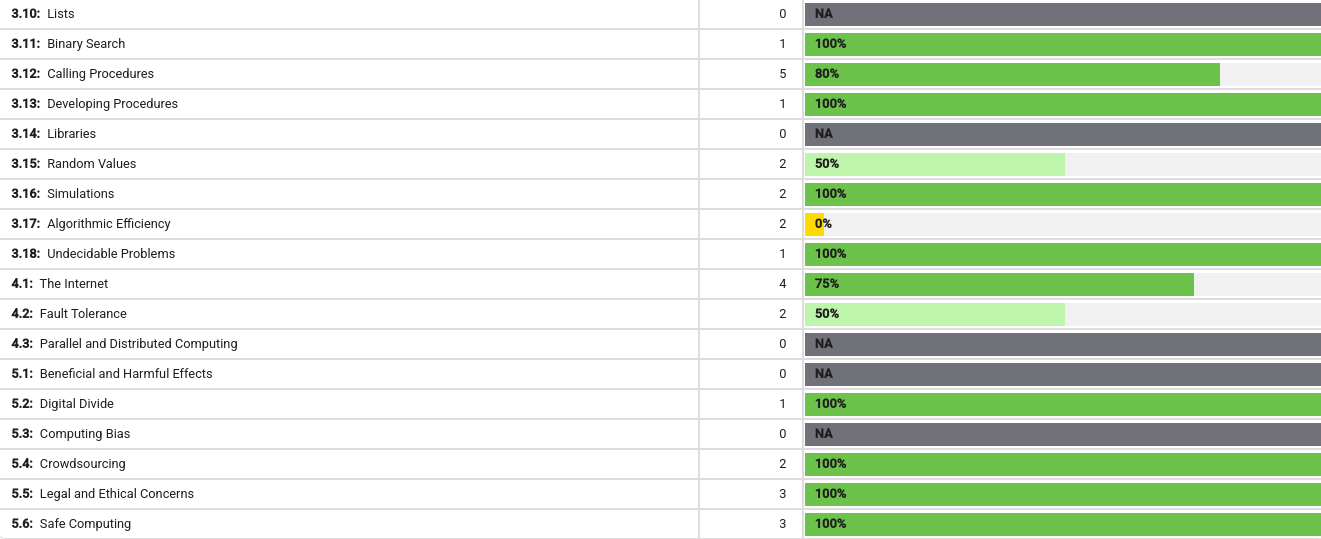
Corrections:
My weakest portion at the start were 1.4, 2.1, 2.3, 3.4, & 3.7 where most of these big ideas were from the past, and would be better to re-review as I was more efficient on the newer big ideas rather than the smaller ideas.
1.4: Identifying and Correcting Errors: For this section, I got a 43% out of 7 questions. What I should improve on in this question is understanding key terms when combined together such as conditions including if/else statements. Most of these questions during these big ideas asked to identify the terms and understand what is wrong with the function.
Question 16: Error in wordList traversal:
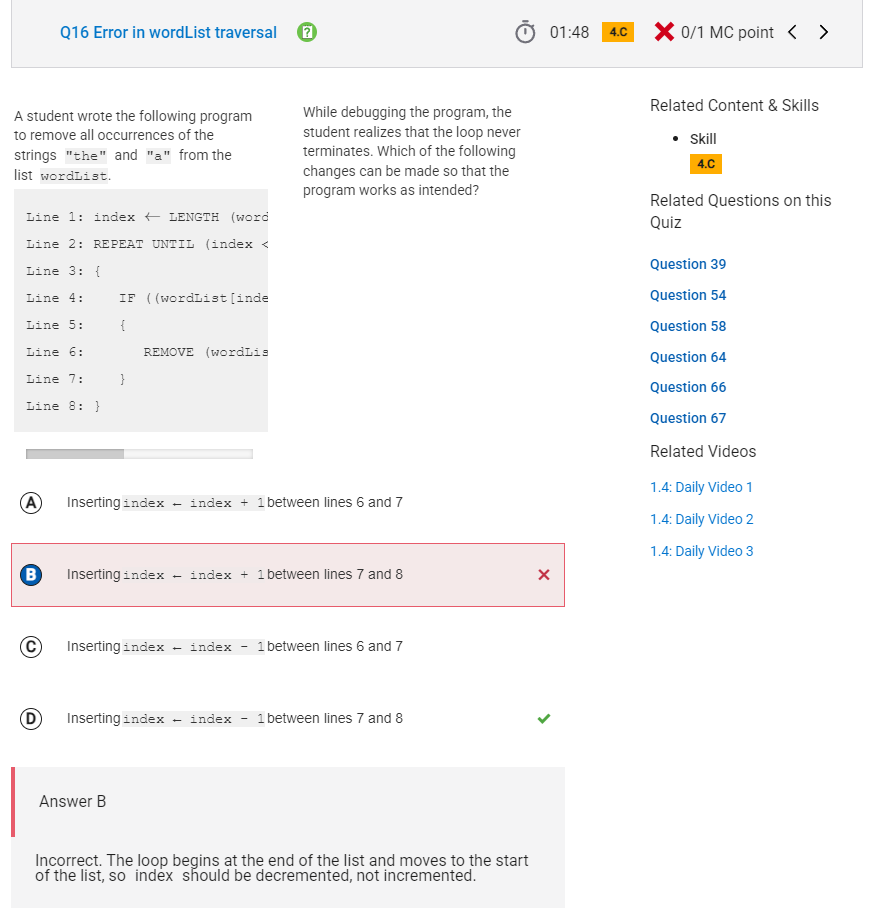
The Answer was D instead of B as line 2 mentions “REPEAT UNTIL (index < 1)” from which index should keep going down by 1 so its limited instead of going up by 1 where the number will always be infinite if index is > 1.
Question 39: Error in calculating sum:
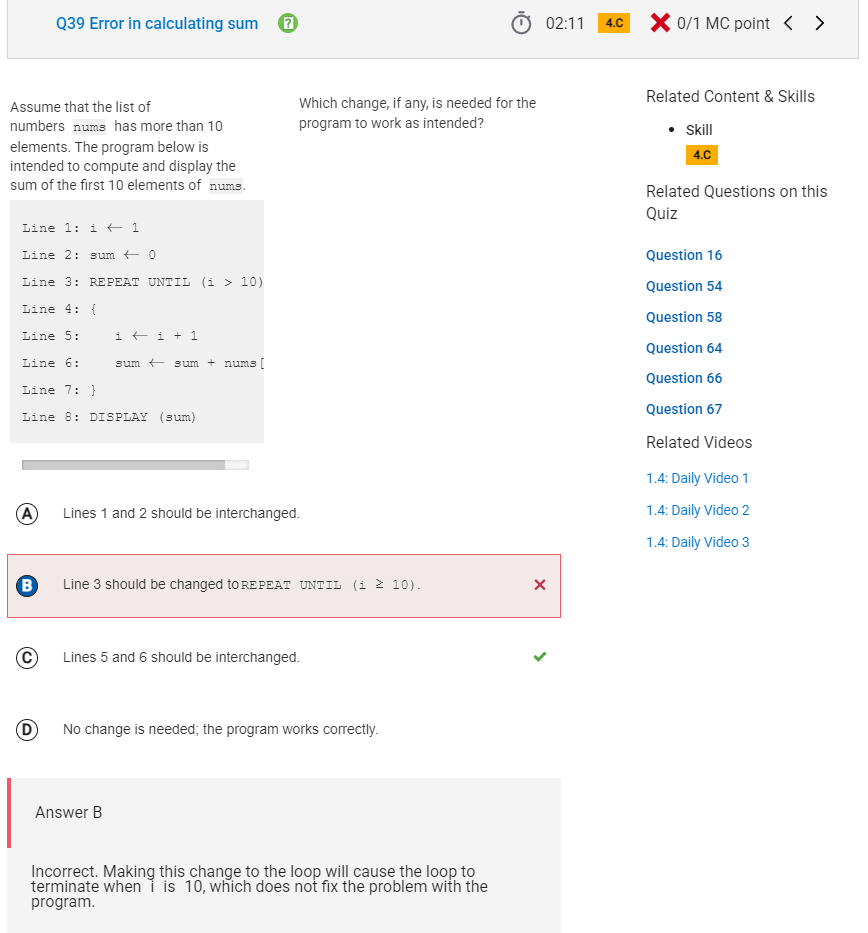
The Answer was C instead of B. Since i already has a value of 1, line 5 and 6 should be interchanged so line 5 will correctly run sum, and line 6 will correctly the variable “i”.
Question 64: Error with multiplication using repeated addition:
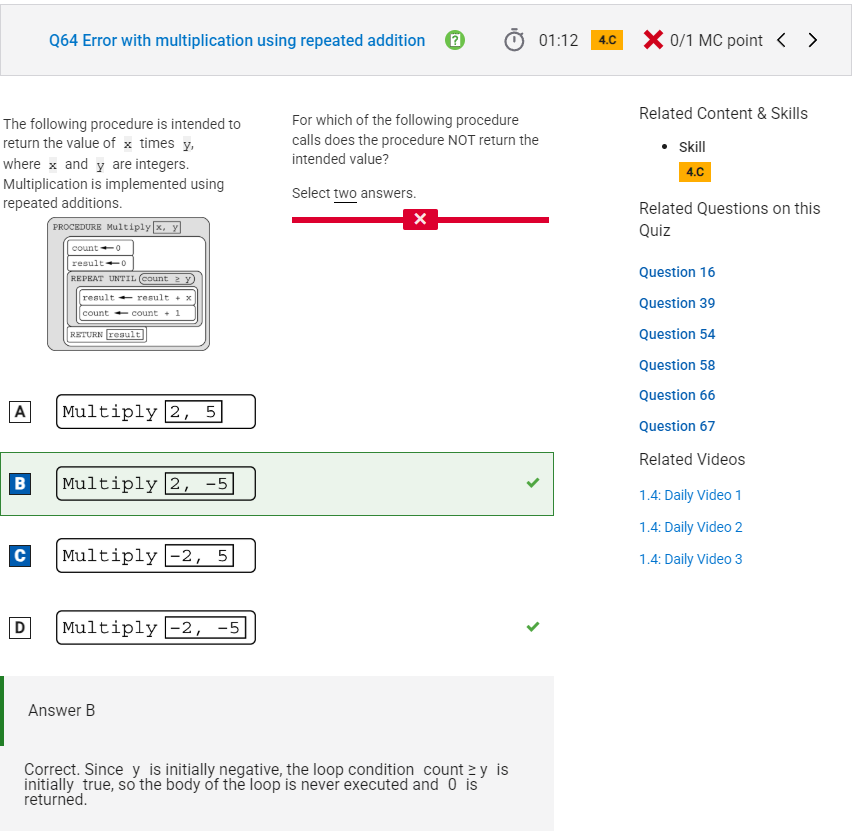
The answer instead of C was D. Since the procedure will repeat until count >= y, then y has to have a difference less than one than x in order for the procedure to not repeat infinitely and never return a value.
Question 67: Error in numOccurrences procedure:

Instead of C & D, the answer should’ve been A & B. In the procedure the count of the list is increased by 1, causing “oak” to be the last element inside of the list not allowing any duplicates of any other elements to be returned.
2.1: Binary Numbers: For this section, I got an 80% out of 5 questions. Generally I understood the concept with binary numbers, at least for colors. For colors, multiplying ever number that has a 1 inside of it by 2, and it creates an rgb. However for regular binary, it mixed me up with understanding the difference between color and regular.
Question 49: Unique bit sequences for staff:
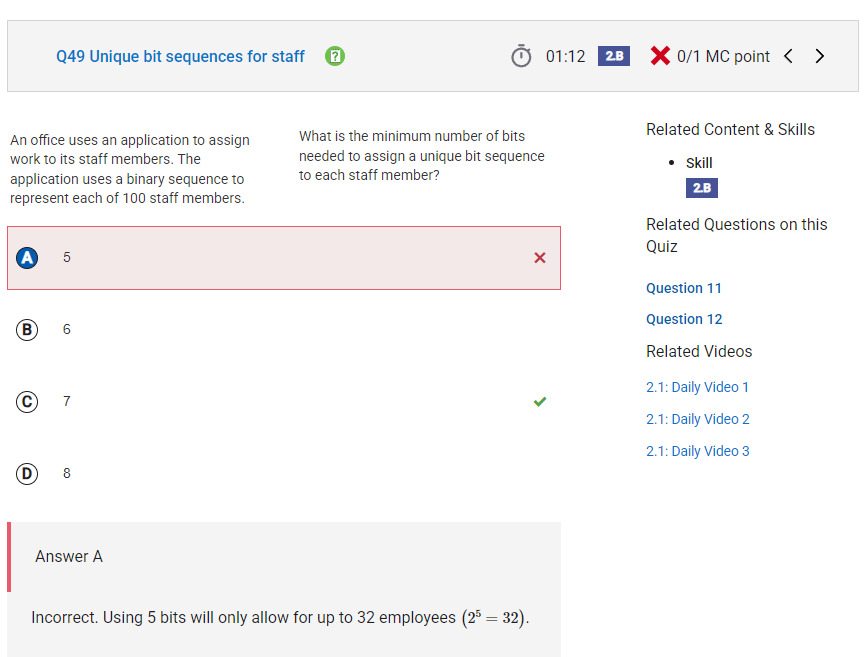
The answer for this problem should’ve been C instead of A. In this part, the problem was about a binary sequence where the given value needed to have a base of 2, and a power that equals and doesn’t exceed 200, or below 100. In this case, 2^7 should work as it fits the domain, being equal to 128.
2.3: Extracting Information from Data: For this section, I got an 86% out of 7 questions. Overall, I think I did pretty decent in this section, however to improve on this big idea, its better to know key terms from the information provided in the question and how they coorelate with the problem faced.
Question 19: Unique bit sequences for staff:
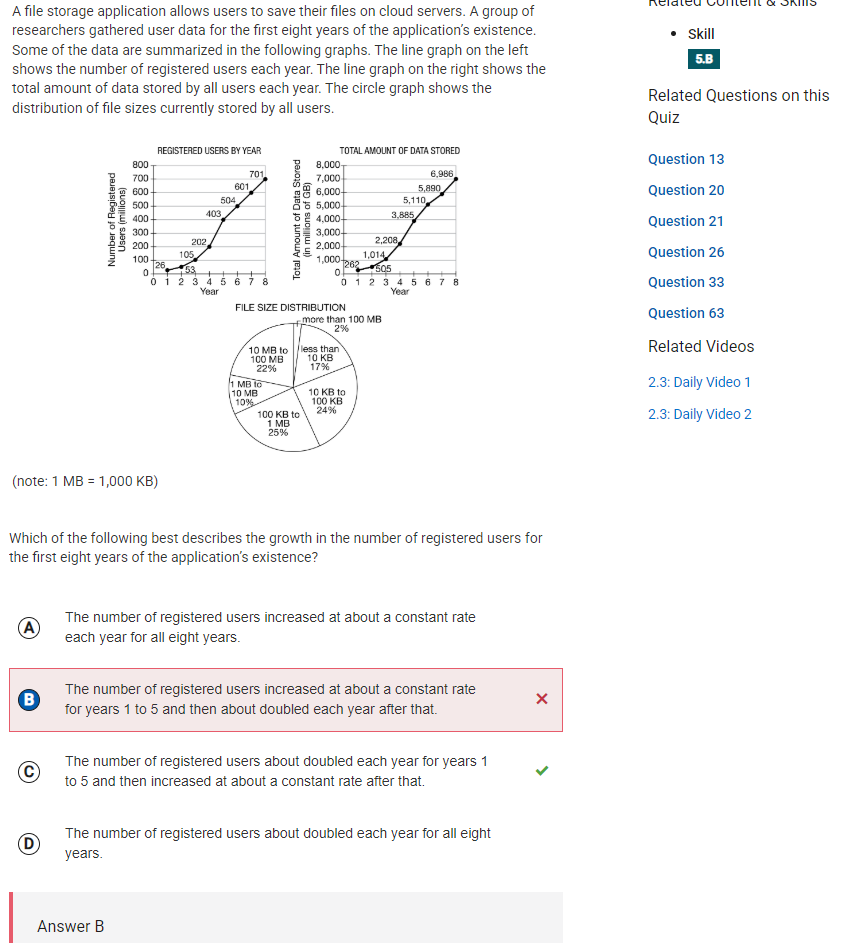
The answer for this problem should’ve been C instead of B. This is true as in the graph, the amount of users doubles from 26 -> 53, 53 -> 105 and so on, all the way till year 5 where it slows down. Then from year 6-8 it moves consistently.
3.4: Strings: For this section, I got a 0% out of 1 question. Generally I shouldn’t have missed this one as strings are a key part of programming when referring to an object. What I should’ve focused on is re-reading the question and judging based on certain components of the code.
Question 65: Unique bit sequences for staff:
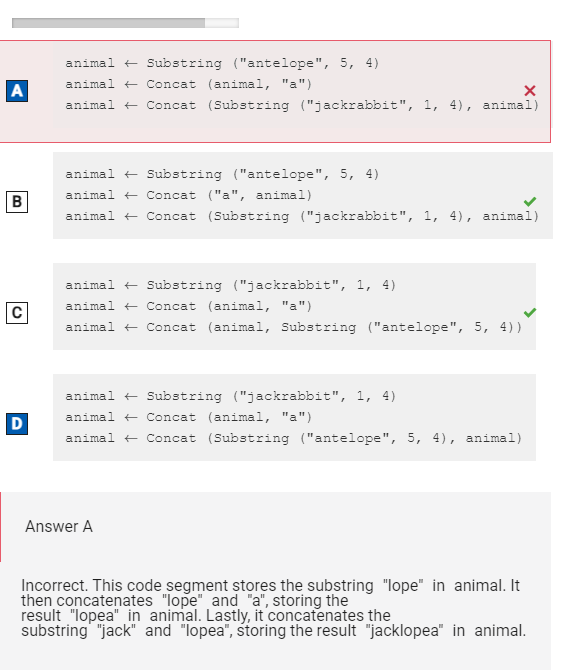
The answer from this problem should’ve been B and C instead of A and D. A & B on this question dont align the variables correctly while B & C align them similarly.
3.7: Nested Conditionals: For this section, I recieved a 50% out of 2 questions. Generally I just have to re-read the problem and match statements like if/else statements, like if they’re true or if they’re false.
Question 10: Science museum tickets:
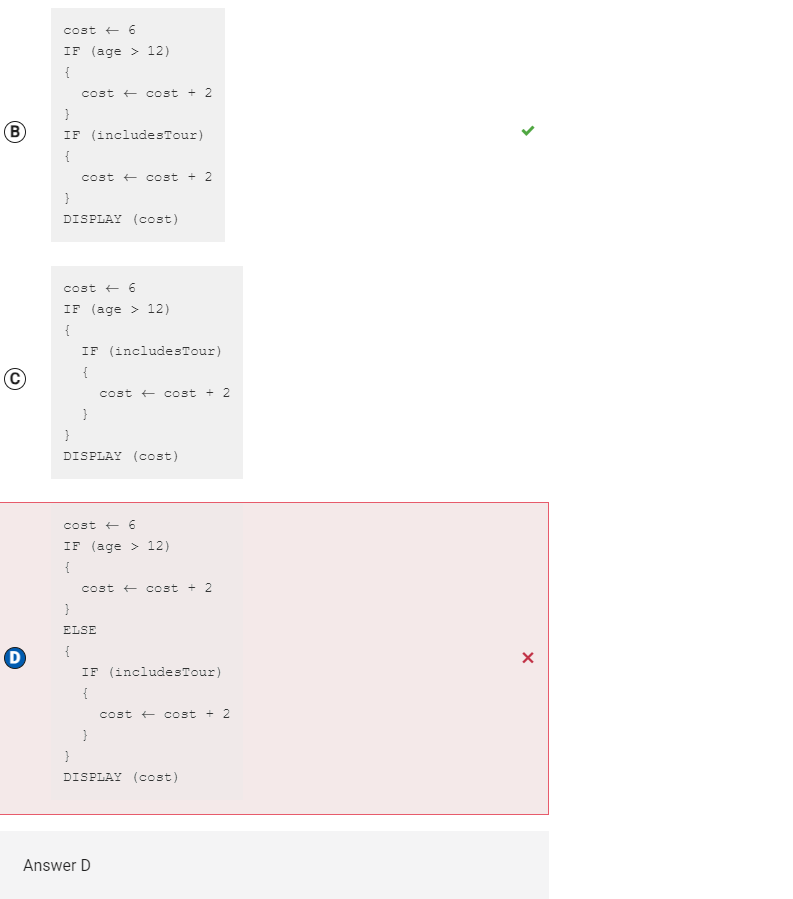
The answer for this problem is B instead of D. This is because the minimum cost is around 6, so the cost should constantly match accordingly to the ticket rules.
3.12: Calling Procedures: For this section, I got an 80% out of 5 questions. Overall, this section wasn’t bad, however yet again it’s better to re-read the questions, and like for nested conditions, its better to treat statements like true or false statements where you understand if something is true and correct anythhing if its false.
Question 41: TrimLeft and TrimRight:
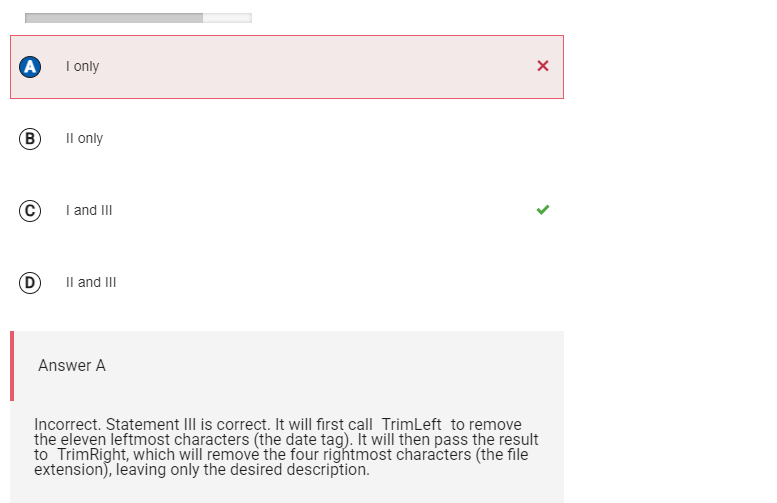
The answer is C instead of A. Although A is correct as well, III also works as an option as the orders in which the procedure runs is just flipped, so they both work similarly.
3.15: Random Values: For this section, I received a 50% out of 2 questions. Overall I feel as if I didn’t understand this section as well like Nested Conditionals. I felt to rush thsi section more and as a result got some of them barely correct. If I re-read the question and took my time in understanding what the question was asking, I’d have a better insight on what I could do to fix it.
Question 45: Coin flip simulation:
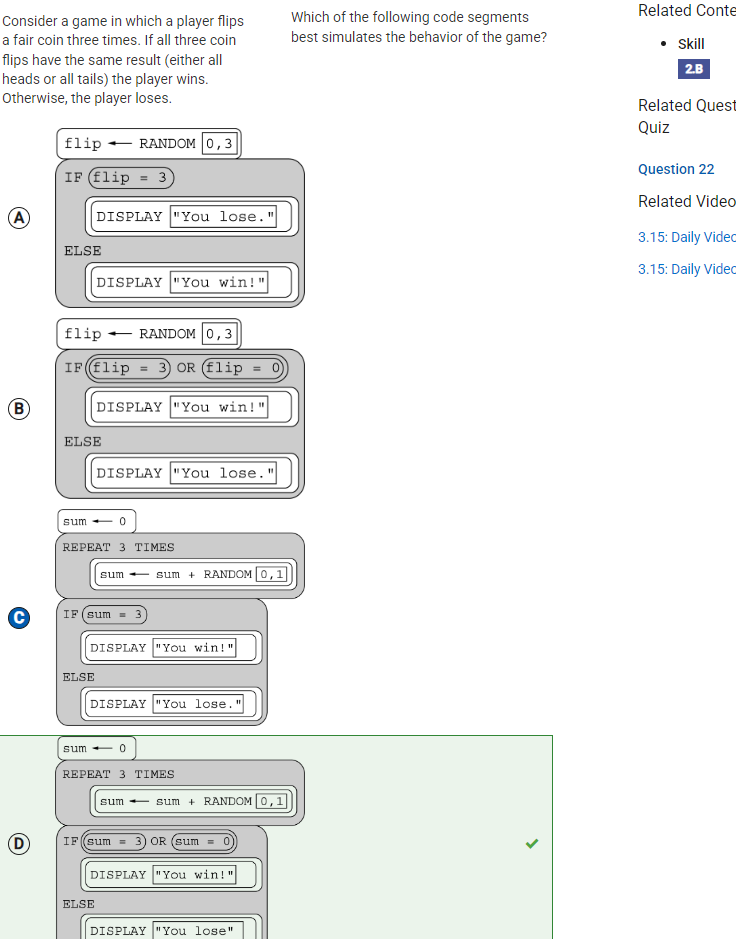
The answer is D instead of C. Although C is correct on some aspects, it lacks the other side, from which D covers with both heads or tails having their own separate chances and goals.
3.17: Algorithm Efficiency: For this section, I got a 0% out of 2 questions. With this question, unlike the name I wasn’t as efficient with this instance. To help better understand this topic, i’ll re-review the lesson plans we’ve gotten from trimester 1 under my blogs about Algorithms, and get a basic insight about it.
Question 56: Compare execution times of two versions:
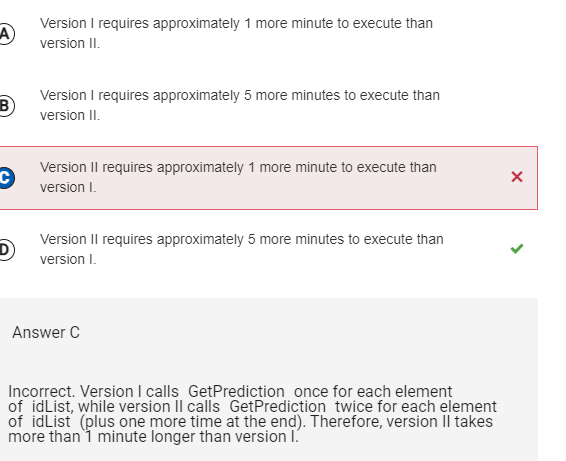
The answer is D instead of C. Version II uses GetPrediction more frequently with a runtime of 1 minute for each use, from which Version I barely uses it, only using it once. Therefore, Version II will run significantly longer rather than barely longer.
4.1: The Internet: For this section, I recieved a 75% out of 4 questions. Generally I felt I understood the questions well as I reviewed the video more effectively and reviewed based from what we took notes on. Overall I should spend more time on some problems than others as its better to get an understanding before going on to the next question.
Question 46: IP address assignment:
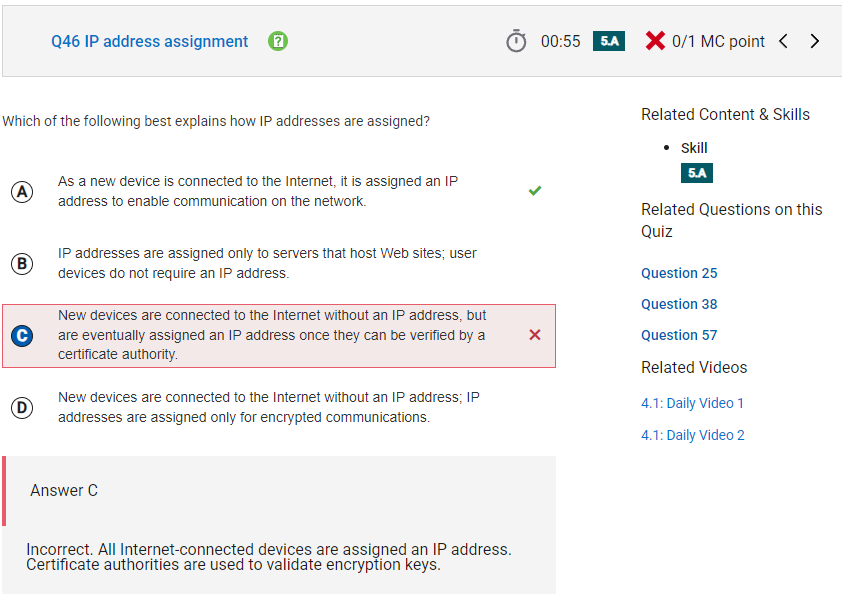
The answer is A instead of C. Establishing a network router needs connection from a user’s IP address in order to connect any nearby devices depending on how much storage and broadway a system has. Network Routers bought by people aren’t specifically authorized and are generally set up by people who own the network router.
4.2: Fault Tolerance: For this section, I recieved a 50% out of 2 questions. For this big idea, I should’ve taken better notes with the videos posted on our AP classroom as they went briefly in depth with the ideas, and I should’ve went through the entire video instead of focusing only on taking notes. As a result, I didn’t understand as much as fault tolerances other than it serves as a backup server for other servers that fail.
Question 43: Redundant routing on network configuration:
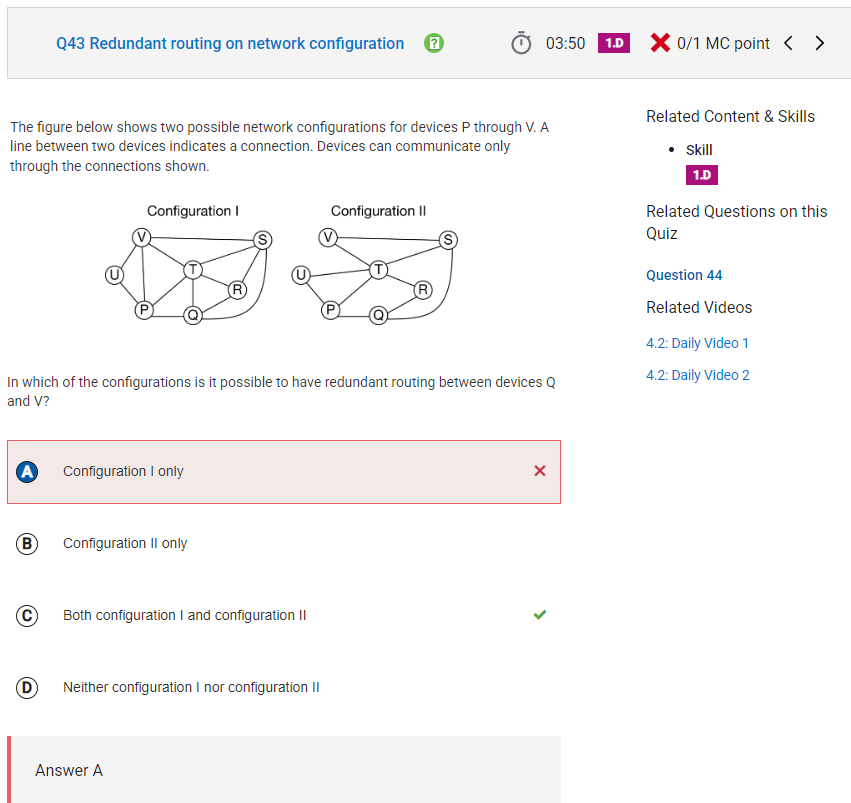
The answer is C instead of B. If you remove the lines that are gatewaying way to V or to Q, it’ll no longer connect on both, applying to Configuration I and II.